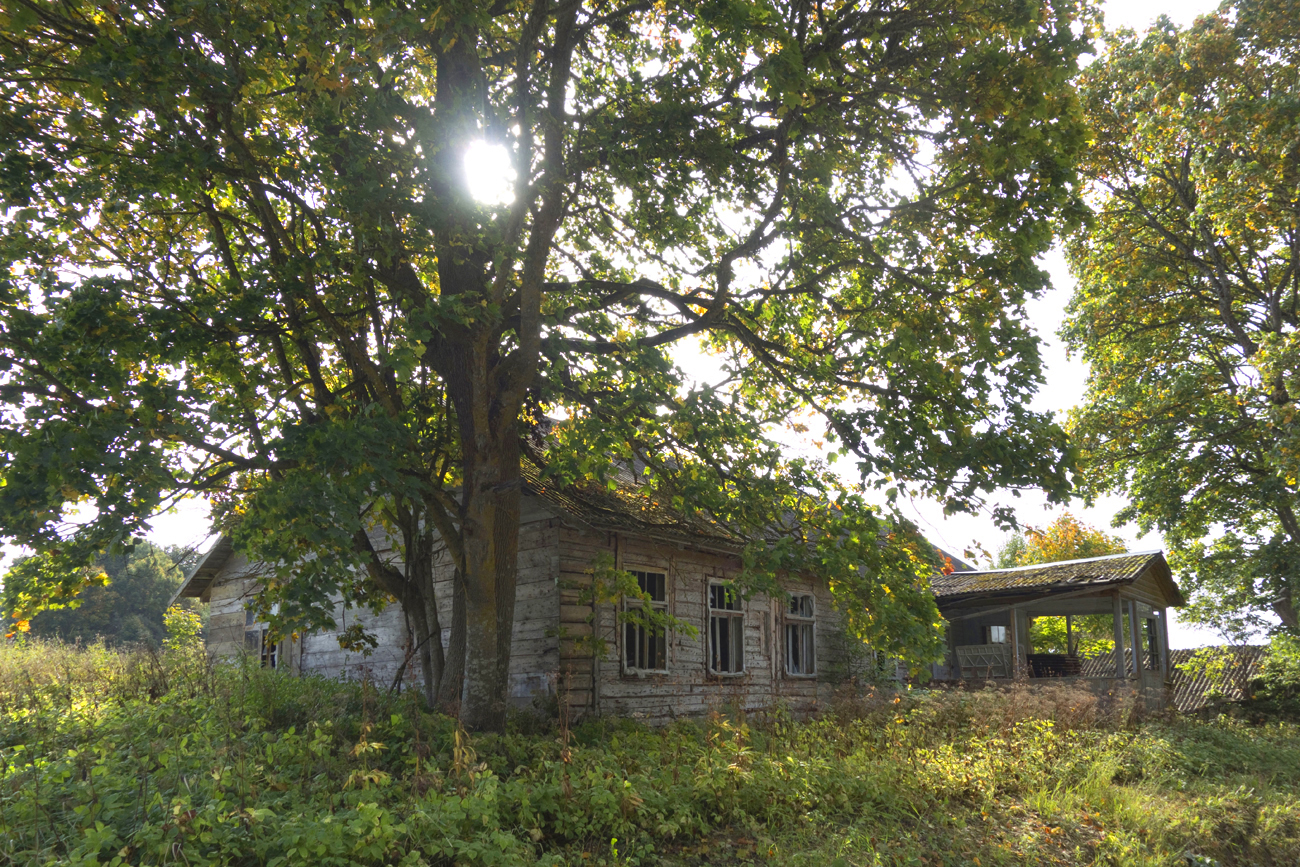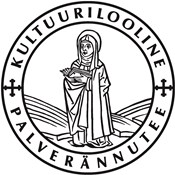From Müüsleri to Abaja village
We continue from the monument to the battle of Müüsleri which took place in the War of Independence. A few steps from the bus stop by the road (on the left) stands the communal granary of the former Müüsleri manor.
The tsarist authorities stipulated that each county in the Baltic province had to build granaries for storing extra grain. When times were hard, peasants could borrow grain from the granary. The first communal granaries in Estonia were established on Saaremaa Island in the 18th century. At the beginning of the 20th century such granaries lost their importance and other functions were found for the buildings.

After the granary we turn off the road on the first path on the right, to a gravel road. We are now in Kaerevere village, the former sauna village of the Müüsleri manor. On the left stands the manor windmill, sadly now without blades, and Rätsepa farm. Meeli and Raivo Seepter run an organic farm here (excellent yoghurt and sõir, curd cheese). Who wishes to take a closer look at the mill, should first visit the Rätsep family.
There are big fields and extensive views on both sides of the road. In a grove where the path forks, we turn left. When we get to Saarse farm (with hives and a dog called Rocco), we keep left behind the house and at once come to the next crossroads. (Valila village on the right where only one family allegedly lives!)


Our path takes us to Abaja village. The village starts off with a rather derelict house, although it must have once been a lovely house with a closed veranda. We learn that this hag been home for schoolteachers. Walking on, we soon come to the pretty Abaja village. The former bank on the left, now home for a young family. The bank (Udeva Ühispank) was established in 1910 by enterprising farmers of Abaja and Vaali village, led by August Jürman, who later became Estonian Minister of Roads (1929) and then Minister of Agriculture and Economy (1931–32). This bank was the oldest of its kind in Koeru parish. In 1930 it moved to Abaja into a new building.

Udeva Ühispank. Archive of Kaarel Aluoja. https://www.vanadpildid.net
.jpg)

Right here, across the road (on the right) stands the now windowless former Udeva schoolhouse (privately owned). Udeva county school was established in 1843 in Abaja village. In 1865 the school was built on a site where they later built the bank. The house, desperately waiting for some renovation, was built for the county school in 1888. It later became a primary school and in 1962 it already had eight classes. Another storey was added in 1959. The school closed in 1970.


National movement was largely introduced to Udeva by Gustav Bach, who came here in 1886 to be a teacher and the county secretary-accountant. Bach was correspondent for the Postimees paper and also for the Estonian Alexander School’s Udeva branch, from 1888 member of the Society of Estonian Literati. He established the first small symphony orchestra in Järva County, he staged the first theatrical productions, and he started the Udeva music society.
.jpg)


Soon we arrive at Otsa farm. A pretty yellow house and other farm buildings of natural stone. In summer 2016 there was a vague agreement that pilgrims could get accommodation here. However, the house seems quite abandoned at the moment and according to villagers the owners have others things on their mind. A great pity.






According to the map, we have to turn right at the Vuti bus stop and head towards Merja.
The former owner of the Mäe farm, Arnold Haavasalu (1914–2009), was an enthusiastic collector of local lore and correspondent of the National Museum.
In reality, however, the road seems to disappear at the last house (Onnimäe farm), but we try again – a short distance through the grass and a thicket (keeping slightly to the left), along the edge of the field and here we are on the Merja road. Merja is on the right.
Who does not risk a shortcut should go on from Vuti bus stop to the crossroads. Prääma farm at the roadside on the left. In 1948–54, the son, Ülo Altermann, led a group of forest guerillas in the area. A bit further on we turn right at the former Abaja or Udeva dairy crossroads – and find ourselves on the road to Merja.


Udeva-Abaja dairy. Private collection. https://www.vanadpildid.net


Abaja shop. Private collection: Tarmo Mänd. https://www.vanadpildid.net
A little bit later the road forks. The right-hand one leads to Kingsepa farm, where a healer once operated under the name of Külmavee Tõnu. You can certainly make a detour there, a round trip of about 1.5 km.
Daila Aas, September 2017
Sources
https://dea.digar.ee/cgi-bin/dea?a=d&d=jarvateataja20080712.1.6
Nelja küla ajaloost. Järva Teataja, nr. 81, 12 juuli 2008
https://jarvateataja.postimees.ee/99848/koeru-valla-muuseum-koidab-lugudega
https://maaleht.delfi.ee/news/eestielu/arhiiv/koeru-valla-hariduselu-iii-vao-kool-udeva-kool-ja-kalitsa-kool?id=65961624
U. Aan. Mälestuskilde Koidu-Ellavere, Valila, Abaja, Merja küladest. 2008
Herbert Last. Koeru valla hariduselu III: Vao kool, Udeva kool ja Kalitsa kool. Maaleht, 14.04.2013.
https://register.muinas.ee/ftp/XX_saj._arhitektuur/maakondlikud%20ylevaated/jarvamaa/jmXX.pdf
